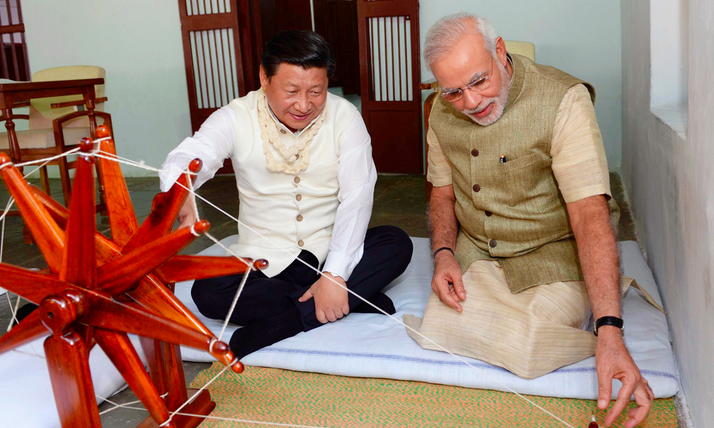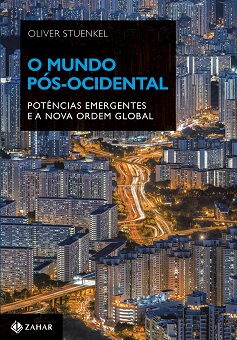
During the second half of 2015, the 15 largest emerging-market economies experienced the biggest capital outflows since the 2008 global financial crisis. During a stock market turmoil in Shanghai, soon afterwards a friend based in New York sent me screenshots of the Shanghai Stock Exchange Composite Index, jokingly adding “useful for your work about the rise of China”. Last week, a colleague picked up a book of mine about the G20 off the shelf and quipped that it was now useful material for a history course.
Voicing optimism about emerging markets is not a popular thing to do these days, but neither was being confident about the future of the internet after the dotcom bust in 2001. Jim O’Neill may be ridiculed these days for having sold a false story about the rise of the rest. Indeed, the structural challenges China and other large developing countries face are enormous. Growth over the coming years may very well hover around 5%, half of what it used to be for the past 35 years since its transition to a market economy began. Despite impressive growth rates on the subcontinent, poverty is still a massive problem in India.
And yet, seen from a broader historical perspective, Jim O’Neill merely confirmed a macro trend that has been going on for decades, namely the growing percentage of people living in developed countries. Bar any profoundly unexpected event (such as a global pandemic), this development is set to endure, and none of the previous economic crises are likely to affect it in the long term. After all, few historians would argue that the 1997 financial crash in Asia marked the 20th century more than the economic transformation of the continent, lifting hundreds of millions of people out of poverty.
What is often overlooked is that compared to the original BRICs projections made a decade ago, emerging countries are still doing well (what is often forgotten is that in 2003, India grew by only 3.8% in 2002 and Brazil by only 1.1%). As The Economist points out, Goldman Sachs expected the combined GDP of the four economies to amount to about $8.7 trillion in 2013. Reality is far rosier: Even including the recent years of lower growth, the combined GDP will amount to over $15 trillion. More important than large capital outflows and currency depreciations is that all this has not created any financial stress in Brazil, India or China. Even higher interest rates in the U.S. are unlikely to change this reality. According to HSBC, almost 3 billion people will enter the ranks of the middle classes by 2050—nearly all in emerging economies.
History shows that straight-line extrapolations are almost always wrong, and expecting that China would continue growing at double-digit rates for the next decades was always unreasonable. However, the pessimists are now commiting the same mistakes, arguing that China is about to enter two decades of low growth, just like Japan did in the early 1990s. But Japan had already reached GDP per capita levels comparable to Western countries when it stopped growing. China’s GDP per capita, by contrast, is only 25% of Japan’s in 1990, and it has years of growth ahead before it has fully caught up with the West. Rather, in terms of GDP per capita, China today may be compared with Japan in the 1950s, which marked the beginning of near double-digit Japanese growth for the next decades. Another useful comparison may be South Korea in the mid 1970s, after which its economy grew above 7% per year until the 1990s. It shows that China still possesses a significant latecomer advantage, as it can achieve technological advances via imitation and importation, having to rely less on innovation.
Slower growth is a major challenge for policy makers in Beijing. And yet, it would be wrong to believe that current trouble changes the fact that developing countries can be expected to grow faster than the rich world. Observers should remember that, for developing countries, the wave of industrialization and urbanization and the associated productivity gains are far from over. With their faster-growing populations and productivity, they will inevitably enjoy a growth advantage over developed economies for some time to come.
China may take longer to overtake the US economy, but few would seriously argue that we are not witnessing a transition. The world economy will not return to the distribution of power of the late 20th century.
As Zachary Karabell argues,
Sentiment may have shifted dramatically in the past few months, but there is a substantial difference between that and structural collapse and crisis. Yes, emerging world economies are seeing slowing growth relative to the heightened rates of recent years, and yes, the shift to domestic demand-driven economic activity is not easy. But that is not the same as re-writing the script of the past decade and turning the achievements of many of these countries into a mirage.
When it comes time to write the story of the first years of the 21st century, the global narrative will not only be the struggles of the United States to adjust to a world of diffuse power, or the rise of China and the decline of Europe. It will be the way that substantial portions of the planet emerged from agrarian poverty into the early stages of urban affluence. It will be the way the Internet and the mobile revolution anchored by the rise of China began to reshape the vast regions of sub-Saharan Africa; how India’s middle classes started to redefine that country, and how millions in Latin America sloughed off decades of authoritarian incompetence and began to blossom. Never in human history have more people become more affluent more quickly than in the opening years of the 21st century.
As a consequence, the fundamental logic of the need to reform global governance structures remains sound. For policy makers in Europe and the United States, engaging emerging powers is the only way of assuring that international institutions remain functional once the traditional powers are no longer in control. The difficult process of adapting to a new reality has just begun. In the coming years and decades, far more extensive reforms – in the World Bank, the IMF and the United Nations Security Council – will have to be implemented if these institutions are to maintain their legitimacy in the twenty-first century.
Read also:
Towards a leaderless and chaotic world?
Interview: Why the BRICS will remain an important force in world affairs in 2015 and beyond
Book review: “The End of American World Order” by Amitav Acharya
Photo credit: Xinhua news








